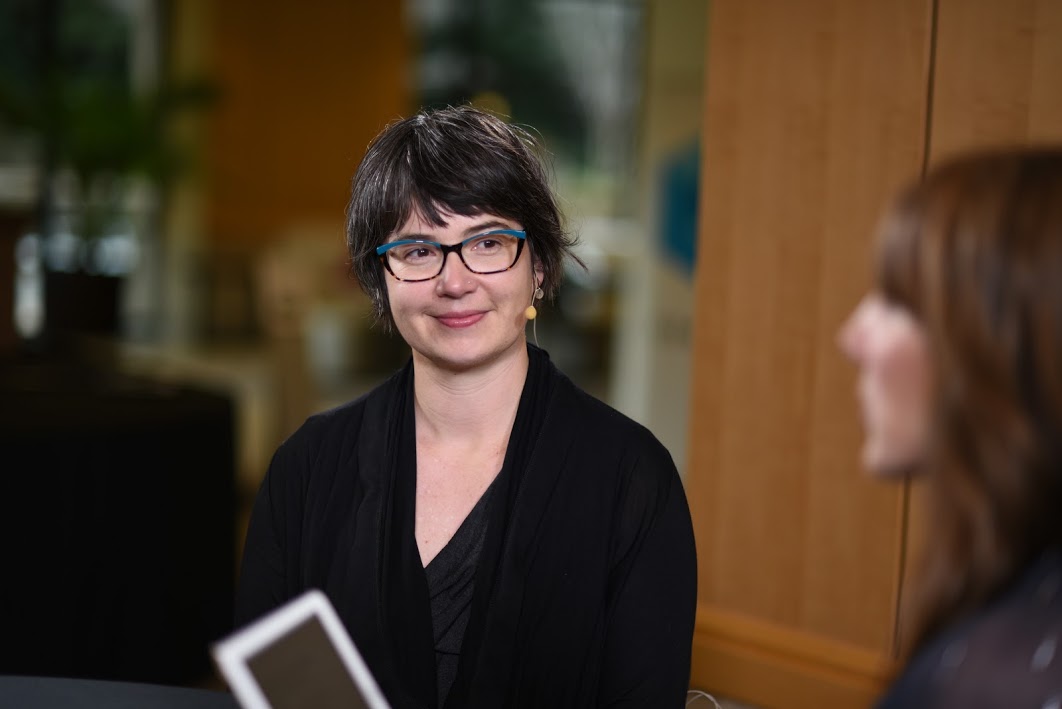 WOMEN IN TECH
WOMEN IN TECH
 WOMEN IN TECH
WOMEN IN TECH
 WOMEN IN TECH
WOMEN IN TECH
Computer and data science in the past has been largely dominated by men, but as time goes on more and more women are becoming part of the industry, according to Miriah Meyer (pictured), assistant professor at the University of Utah. The entire field is changing as a whole, but to keep this trend going, it is important to find ways to communicate to the new generation of women who might be interested in data or computer science, as well as other scientists who collect vast quantities of data but don’t necessarily have the right background to make sense of it.
The Stanford Global Women in Data Science Conference, now in its second year, aims to speak to those younger generations of women who are considering data science as a potential career, but it also targets women of all ages who are already a part of it.
“I personally find it so important to communicate clearly,” said Meyer. “It’s probably partly why I do the work that I do. But I learn a lot every time I give a talk at a place like this.”
Meyer spoke with Lisa Martin (@Luccazara), host of theCUBE, SiliconANGLE Media’s mobile live streaming studio, from the Stanford Global Women in Data Science Conference in Stanford, CA. The two discussed Meyer’s role in teaching data and computer science to a younger generation, as well as her own work creating data tools for scientists outside of her own field.
In Meyer’s work as a professor, she teaches both graduate and undergraduate courses, and in doing that she is in a position to interface not only with a new generation of women interested in data and computer science, but also with other scientists who have been in the field all of their lives. In her role as a research scientist, she assists other experienced scientists working on complex problems by making the data they are collecting useful to them.
“I have this incredibly privileged position where I get to go and work with people who are at the cutting edge of their field and learn about this amazing work that they’ve been spending their lifetime on,” said Meyer. “I have done a lot of work with scientists, particularly in biology where there has been this amazing explosion of data and people are trying to wrap their heads around what they have.”
In working with these scientists who are outside her own field, Meyer’s goal is to make the vast volumes of data these scientists are gathering useful to them, by creating visualization tools that make their data easier to understand.
Many scientific fields are beginning to collect vast quantities of data in regards to their individual research topics. Most of these scientists are not computer or data scientists per se, so it is essential that they have someone on their team like Meyer to assist them in making the volumes of data they are collecting make sense.
In this role, Meyer assists by creating custom visualization tools unique to the project and data type. This is an invaluable asset to the other scientists, because without someone in this role, the data they gather is useless.
“I have done a lot of work with scientists, particularly in biology, where there has been this amazing explosion of data and people are trying to wrap their heads around what they have and what kind of amazing discoveries they may be sitting on,” explained Meyer. “It’s really interesting … we got so good at creating data … but if you can’t make sense of it, who cares?”
In fact, the ability to make sense of so much data in a meaningful way sometimes even actually changes the way other scientists look at their project, she said.
“I design tools with them that even sometimes change even the way they’re thinking about the problem,” Meyer said. “So it’s extremely satisfying, and it’s very much in the spirit of team science, and it’s a lot of fun.”
Watch the complete video interview below, and be sure to check out more of SiliconANGLE and theCUBE’s coverage of the Stanford Global Women in Data Science (WiDS) Conference. (*Disclosure: TheCUBE is a media partner at the conference. Neither Stanford nor other sponsors have editorial control over content on theCUBE or SiliconANGLE.)
Support our open free content by sharing and engaging with our content and community.
Where Technology Leaders Connect, Share Intelligence & Create Opportunities
SiliconANGLE Media is a recognized leader in digital media innovation serving innovative audiences and brands, bringing together cutting-edge technology, influential content, strategic insights and real-time audience engagement. As the parent company of SiliconANGLE, theCUBE Network, theCUBE Research, CUBE365, theCUBE AI and theCUBE SuperStudios — such as those established in Silicon Valley and the New York Stock Exchange (NYSE) — SiliconANGLE Media operates at the intersection of media, technology, and AI. .
Founded by tech visionaries John Furrier and Dave Vellante, SiliconANGLE Media has built a powerful ecosystem of industry-leading digital media brands, with a reach of 15+ million elite tech professionals. The company’s new, proprietary theCUBE AI Video cloud is breaking ground in audience interaction, leveraging theCUBEai.com neural network to help technology companies make data-driven decisions and stay at the forefront of industry conversations.